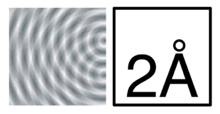Heuristics Still Have a Long Way to Go, 20 Years Later
/...and by that I'm referring to Jakob Nielsen's 1995 article on 10 Usability Heuristics for User Interface Design, and how they still haven't become as ingrained as they should.
One of the things I encounter on a regular basis in my professional life is the idea that design equals "how it looks". This is not always a terrible default definition, as "design" is often about how things look (yes, of course, even color and font choices have a large effect on readability, but let's elide over that for now), but it shouldn't be the total or overwriting definition. All too often it's an uphill battle to present design as more equal to "problem solving" or "how it works". It's harder to pitch the return on investment of thinking through interaction flows than to present a pretty interface, especially to those who feel it's not something they want to spend time on.
For instance, we've had 20 years to digest and internalize the well researched precepts of what Nielsen boiled down from actual research. We do know that users find products that follow these heuristic principles easier to use and more "elegant" (we should reappropriate this term, casting it as a way to do things rather than some Apple-ish sheen), and are more likely to use and keep using said products.
Of course, some of these heuristics are harder than others to do, especially in products that gain features or are built to serve many masters. There's almost an exponential relationship between tabs or features or user goals and the work involved in making sure the product works well for the user. Nobody said it was easy to do good work.
Then again, sometimes there are examples where all it takes is open eyes and empathy for the user. As I've been known to say, "If you know how it works, you are not the user."
Case in point is the browser-based dashboard for Western Digital's My Cloud (and props to not making it "MyCloud"). It's fairly pretty, with nice, clear target areas to click on; this checks the "Recognition rather than recall" and "Aesthetic and minimalist design" heuristics. There's also some degree of "Consistency and standards" as well as "Match between system and the real world", if you take the real world in this case to be virtual storage spaces.
But these are the relatively easy targets, one you can hit with static sketches, with no testing in the real world. What happens when something goes wrong? Let's take, say, my case. All I wanted to do was plug in another hard drive and back it up. Given that I had most of my media on the drive, it took a while, so I left it to run overnight. The next morning, I found how to check the result (a tool tip for "Job Detail" is not great, but okay), but here's the Detail:
I think we can all see where this would drive Nielsen nuts.
“Help users recognize, diagnose, and recover from errors
Error messages should be expressed in plain language (no codes), precisely indicate the problem, and constructively suggest a solution.”
I suppose "it failed" is plain language, but in this case maybe even a code I could look up would be more useful. So I should check the system settings? Do you mean the My Cloud system settings? There are six submenus for that, each with areas within. A more useful design would let the text be a link to the precise settings feature, or there could be more text (well written text is a very useful heuristic aid). There could be a link to a log file for more advanced users to dig into. This just makes me feel dumb, but in reality the system is hiding information from me while implying I should automatically know what it means.
Ideally, if My Cloud knew that this backup was destined to fail (and I've tried running it more than once, both with the "Copy" and "Synchronize" options), it should pay heed for another of Nielsen's heuristics:
“Error prevention
Even better than good error messages is a careful design which prevents a problem from occurring in the first place. Either eliminate error-prone conditions or check for them and present users with a confirmation option before they commit to the action.”
The disk I'm trying to back up is not larger than the My Cloud capacity – and even Windows since NT has saved users from wasting long copying processes by running a simple free-space comparison. Is the new disk failing already? Was there data corruption? These could be simple checks, with simple-language messages, that could easily run before the user runs an overnight process.
This is starting to veer into "Siracusa reviews a toaster" territory, but this is a non-trivial problem for a relatively simple use case; we can expect users may want to back up data to the new backup system they just bought. And this is also illustrative of serious problems an elegant design can actively create for users if you focus on only a few heuristics, and the ones that pop up only if everything runs perfectly. How often does that happen, outside of a demo?


